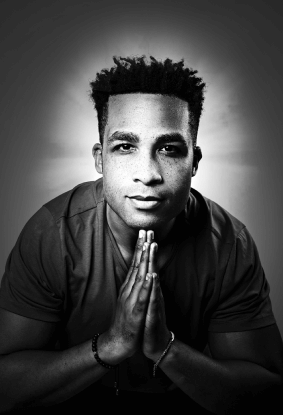Introduction

In today’s hyper-connected, mind-centered world, the body is often overlooked as a pathway to transformation and peace. While most people seek freedom from mental tension through cognitive techniques, the physical body holds a surprising key to dissolving the egoic mind. Releasing physical tension repeatedly and with awareness is a simple yet profound practice that gradually disarms the ego, bringing us closer to our true, authentic selves.
This approach to dissolving the ego is rooted in understanding that the mind and body are deeply interconnected. The ego, often experienced as relentless mental chatter, also has a physical counterpart: body tension. When we systematically release this tension, layer by layer, we create space for a quieter mind, a relaxed state of being, and a natural emergence of presence. This article will explore how continuously releasing bodily tension can help dissolve the egoic mind, leading to a freer and more fulfilling existence.
Grounding in the Present Moment
Releasing tension is an inherently present-moment practice. As we direct our attention to the sensations in our body, we create a direct and immediate connection with the here and now. The ego, however, thrives in the mental constructs of past and future, creating narratives and concerns that pull us away from the present. By focusing on physical sensations, we disengage from the ego’s time-bound thoughts and anchor ourselves in the present moment.
The act of releasing tension requires us to “listen” to our bodies in real time. For example, as you consciously relax your shoulders, you’re drawn into the sensory experience of letting go, noticing the slight shifts in sensation and warmth as the muscles soften. This attention to the present moment is a fundamental step in bypassing the egoic mind, which relies on mental projections and identifications.
Letting Go of Control and Resistance
At its core, the ego is a defense mechanism, a set of thoughts, beliefs, and emotions that are aimed at protecting our sense of self. This need for control and resistance to perceived threats often manifests physically as tension. When we begin releasing this physical tension, we’re practicing a subtle yet profound act of surrender, one that teaches us to let go of our ego-driven need for control.
Think about how your body feels when you’re anxious or stressed. You may notice your stomach tightening, your jaw clenching, or your shoulders tensing. These physical reactions are automatic defenses, rooted in the ego’s need to shield us from discomfort. By gently releasing these areas of tension, we are sending a signal to the ego that it’s safe to let go, dismantling the need for control in both body and mind.
Discovering Layers of Conditioning
As you continue this practice, releasing tension over and over, you’ll begin to notice layers of tension and holding patterns you weren’t previously aware of. The body stores unprocessed emotions, trauma, and deep-seated beliefs, often buried under layers of muscle tension and physical constriction. These are part of the “body armor” that the ego constructs over time, holding onto as a way of safeguarding our identity.
When we release these layers, we’re not just relaxing our muscles but also unraveling the egoic conditioning that created them. The ego is tied to these patterns, seeing them as part of “who we are.” As you let go of them physically, the beliefs and identities tied to them may begin to dissolve as well, revealing a deeper self beneath these learned responses. You may find that with each release, you uncover an unexpected lightness, a sense of freedom from previously held judgments, and a broader sense of awareness.
The Body as a Gateway to Inner Freedom
Many mindfulness and spiritual practices advocate a shift from mind-centered awareness to body-centered awareness. The practice of releasing body tension naturally moves us toward this embodied awareness, grounding us in sensory experience rather than intellectual analysis. When you turn your attention inward and become fully present with the body, you step outside the mental sphere where the ego typically operates.
By inhabiting the body and tuning into its sensations, you disrupt the ego’s narrative. Instead of mentally analyzing or labeling experiences, you begin to feel them directly, as raw sensations. This body-centered awareness creates a subtle shift away from identifying with the mind’s story, allowing for a state of pure awareness—a state in which the ego has no foothold.
Cultivating Non-Resistance and Surrender
The practice of letting go of physical tension is, at its essence, a practice of non-resistance. As we release areas of the body that have been habitually tensed, we learn to let go of resistance to life itself. We can observe our body’s impulse to clench and tighten in reaction to discomfort, but rather than reinforcing this reaction, we soften it, teaching ourselves to remain open and relaxed even in the face of challenges.
This act of non-resistance becomes a bridge to deeper surrender, a quality essential to ego dissolution. Each time we consciously release, we are practicing surrender on a micro level, letting go of the ego’s automatic grip. Over time, this surrender ripples into other areas of life, leading to a broader experience of openness and acceptance.
Releasing Emotions Without Egoic Attachment
Our bodies often hold not just physical tension but also suppressed emotions. These emotions—whether anger, sadness, or fear—are frequently associated with the ego, which interprets them as part of its identity. When you practice letting go of tension, these emotions may surface, sometimes subtly, sometimes with more intensity.
By allowing these emotions to emerge in a relaxed state, without judgment or clinging, you create a space for them to pass without identification. This witnessing of emotions without getting entangled with them is a hallmark of ego dissolution. The ego often fuels itself by attaching to emotions, labeling them as “my anger” or “my sadness.” When you let them move through you without grasping, you weaken this identification, enabling you to experience emotions as temporary phenomena rather than aspects of your core self.
Moving Toward an Embodied, Non-Conceptual Awareness
As you continue releasing tension, the practice becomes less about achieving a specific outcome and more about deepening into a state of embodied awareness. You’ll find yourself moving away from a mental understanding of “who you are” and into a non-conceptual experience of being. The ego thrives on concepts and identities, but in this state, there is no need to define yourself. You simply are.
This embodied awareness allows you to experience the world with fresh eyes, unclouded by the labels and judgments that the ego relies on. In this space of pure presence, there is a natural sense of ease and joy—a joy that doesn’t depend on circumstances but arises from the simple fact of being alive.
A Journey Beyond Ego
The journey of releasing body tension is subtle yet profound. Each time you consciously let go of a layer of tension, you are gently unraveling the ego’s grip, moving closer to a state of inner freedom. This freedom isn’t a dramatic awakening; it’s a gradual, quiet liberation that manifests as less resistance, less identification with thoughts and roles, and a natural joy in simply being.
In a world that prioritizes mental solutions to internal problems, the body offers an alternative path—one that is direct, simple, and grounded in the present moment. Releasing physical tension over and over, with gentle awareness, opens a doorway beyond the ego, inviting us to experience life with clarity, peace, and a deeper connection to our true selves. As we continue this practice, we find that the boundaries of the ego begin to dissolve, replaced by a quiet, expansive awareness that is both profoundly intimate and universally connected.
This practice of releasing tension isn’t just a way to relax; it’s a path to transformation and liberation. It’s a journey into the depths of our being, where we find that beyond the tensions and identities we’ve held lies a boundless, timeless awareness—the essence of who we truly are.









